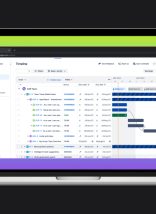In the age of Google and other web analytics, gathering data on your website’s performance is easy. In a few clicks, you could find out your company’s website is producing 25 leads every week and converting at a 3% rate. How’s that sound?
This question is where things get more complicated. Are these website statistics good or bad? Should you take action to improve them? And if so, how do you improve these numbers in ways that actually produce results?
Website lead generation is typically a two-step process. It involves enticing people to visit your website, and then convincing these visitors to take action towards becoming a customer. But knowing which of these two steps needs improvement always starts with research and data. Here’s how to learn if you’re both attracting and converting visitors to your site.
First, are you attracting quality users to your website?
Simply increasing traffic does not help you increase leads. Instead, your traffic must be made of relevant visitors who are likely to need your services. Look into your current traffic and lead sources and evaluate how you can improve your lead quality as well as expand your reach into new channels to develop additional qualified lead sources. For starters, ask yourself these questions:
- Channel Evaluation – Where are your current visitors coming from? Which traffic sources are producing leads, which are not? Are you in all the right channels to attract quality traffic? Do some channels deserve a higher investment of time and effort?
- SEO and Content Analysis – Is your site properly developed for search engines to recognize your pages and context? Is your content written to allow search engines to understand your business and consumers to find you naturally?
- Paid Advertising Evaluations – Are you spending your money wisely and attracting the desired traffic? Are you targeting the right customers in the right places? Are you bidding on the right keywords?
- Advertising Evaluations (Copy and Design) – How do your current advertisements perform? What is your message? Is that message setting the right expectation for your customers? Can your copy and/or design be improved or updated?
- Competitor Research – Where are your competitors advertising? What are they saying?
- Testing of New Ideas and Variations – How often do you test new ad copy, designs, content and landing pages? Are you regularly updating your campaigns based on these findings?
Second, is your website converting visitors into leads?
Bringing users to your website is only the start of the process. Now your website needs to convince visitors to take action towards becoming customers, such as a filling out a form or calling you on the phone. Everything in your website’s content and design needs to make it easier for your visitors to become leads. Here are questions to help you evaluate your site’s ability to drive visitor action:
- Website Usage Monitoring – How do users interact with your website? Is it intuitive or difficult to for the visitor to navigate? Is the conversion point seamless and easy?
- User Interviews/Surveys – How are you acquiring direct feedback from your real customers? Do you invite users to comment on your site or products? Can you incentivize visitors to complete surveys by offering discounts or promotions?
- Analytics Reviews – Based on current data, how are visitors interacting with your website? Do you have a conversion funnel that you can track? Is there a common drop-off point?
- Page Load Evaluation – Do your pages load quickly? Or are slow loading pages causing visitors to leave?
- Content/Design Evaluation – Is your website visibly appealing and interesting for your visitors to engage with? Is your messaging clear and concise? Do visitors immediately know if you have the service or product that will meet their needs?
- Mobile-Friendly – Does your website present well on a mobile device? Is the messaging still clear? Is the conversion point easy to access and complete?
A Living Process of Constant Improvement
The most important thing to remember about website optimization is it’s a living process. Successful companies constantly work to improve their sites by testing new ad copy, designs, content, landing pages, and strategies. Your site should never stop evolving and progressing to improve the visitor’s experience and reach new audiences.
What stood out to you in the questions above? Feel free to let me know in the comments section.






